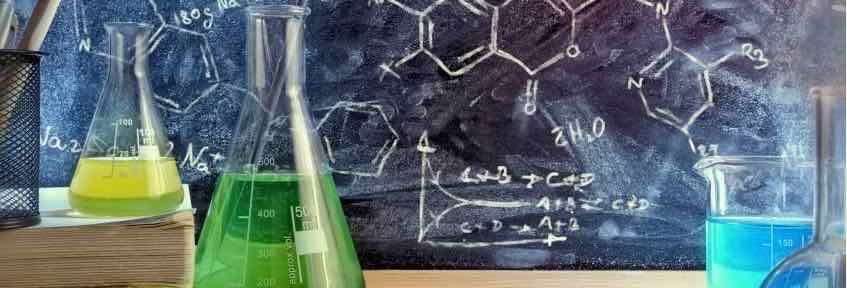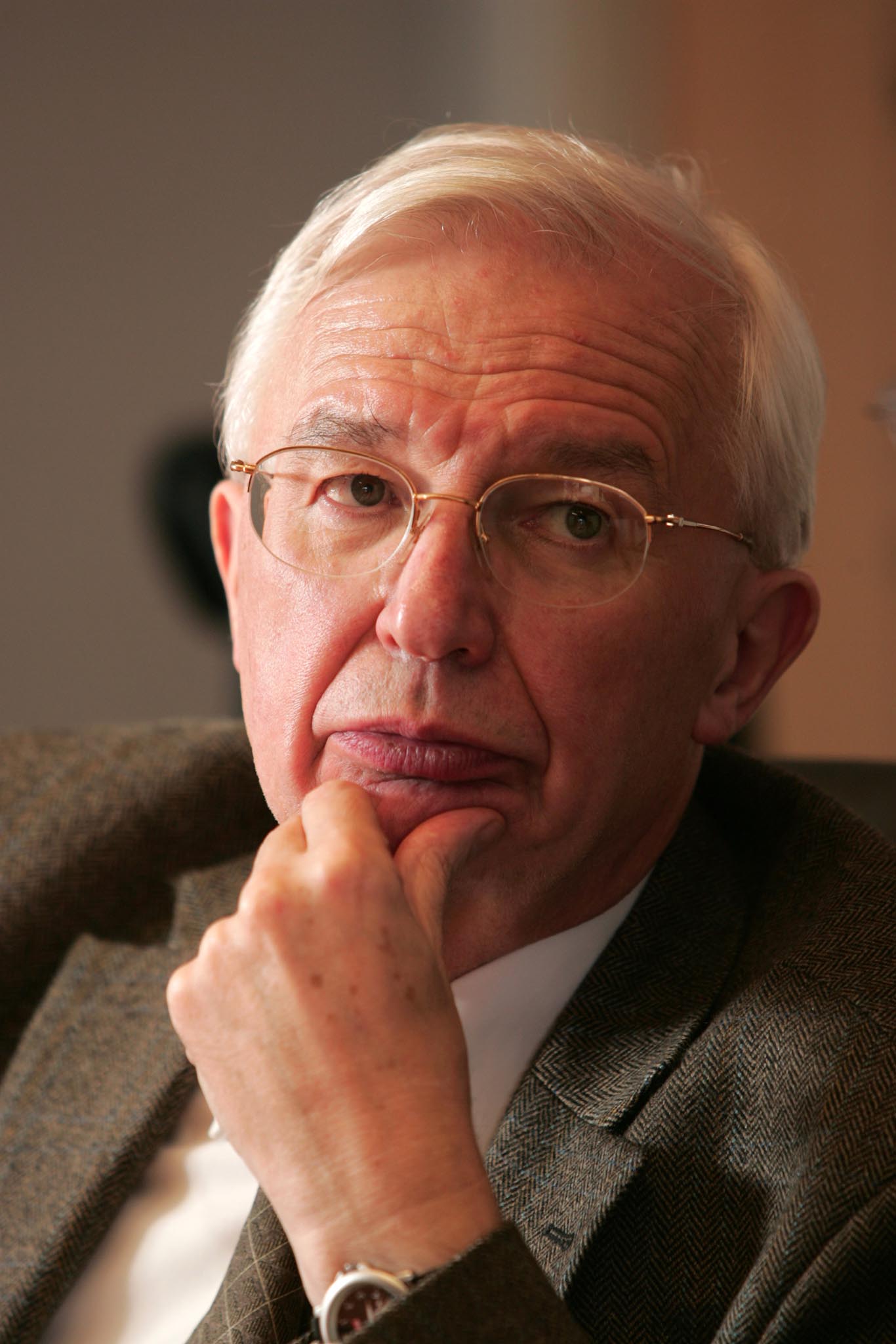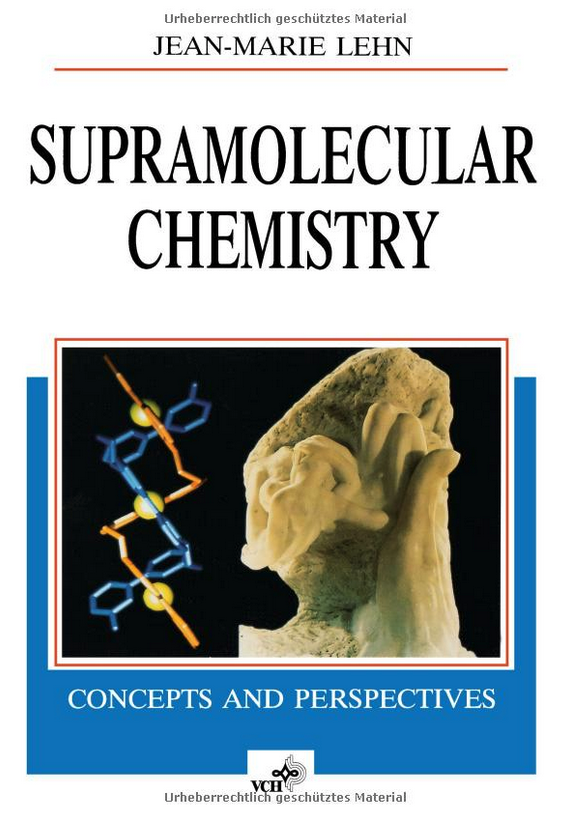
Jean-Marie Lehn, a 1987 Nobel laureate in chemistry, and a TWAS Fellow since 1996, was a keynote speaker at The World Academy of Sciences (UNESCO-TWAS) Fifteenth General Conference. The event, organized by the King Abdullah University of Science and Technology (KAUST) in collaboration with the Islamic Development Bank (IsDB), runs from 1–4 November, for the first time in an all-virtual mode.
Earlier today, Lehn delivered his lecture titled "Steps Towards Life: Chemistry!", in which he offered an overview on the evolution of chemistry taking steps from inanimate matter to complex living organisms. Chemistry, he noted, is the key to all that we see. The lecture was chaired by TWAS Secretary-General, Prof. Luiz Davidovich.
From the very beginning of his scientific career, Jean-Marie Lehn was attracted by the way molecules recognize each other, bind and, in the far end, form organisms who can think. His early studies, however, had brought him elsewhere.
After completing his PhD (1963) at the University of Strasbourg, in France, he carried out his post-doctoral studies at Harvard University (1972) in Cambridge, Massachusetts, USA, where he took an active part in the experimental synthesis of vitamin B12.
From 1970–1979, he was appointed Professor of Chemistry at the Université Louis Pasteur in Strasbourg, and since 1979, he occupied the Chair of Chemistry of Molecular Interactions at the Collège de France in Paris.
His major interest, however, was already clear. Lehn's aim was to understand how molecules assemble and disassemble to form complex structures, and his pioneering studies paved the way for a new branch of chemistry, called supramolecular chemistry.
His international collaborations brought him to Harvard University first, in 1972 and 1974, and to the Eidgenössische Technische Hochschule Zürich (Swiss Federal Institute of Technology in Zürich) in 1977, as a Visiting Professor. In 1987, he shared the Nobel Prize with Donald J. Cram and Charles J. Pedersen. The recognition was bestowed "for their development and use of molecules with structure-specific interactions of high selectivity."
In the following interview with TWAS staff writer Cristina Serra, Lehn offered his view about the power of modern chemistry and the benefits that may stem from the proper use of science.
The interview has been edited for clarity.
Professor Lehn, when you received the Nobel Prize, supramolecular chemistry was in its infancy. What may we expect from this dynamic field, in 20–30 years from now?
These predictions are always very difficult: I'm not a soothsayer and I don't think that scientists can tell the future. Scientists should be very cautious when observing what lies ahead because things happen in unpredictable ways and discovery in one sector may suddenly have an impact on another sector. Chemistry, however, is a central science and has three major arms: structure, transformation and information in molecular entities. Scientists start from the structure of matter, transform it, and then study how the information contained in the structure is processed through novel interactions with the surroundings. I think this will be a major trend of chemistry in the near future: a path towards higher states of complex matter.
In the early days of your career, well before your being awarded the Nobel Prize, did you ever dream of making an impact in this sector?
I did my first steps in science under the guidance of Prof. Guy Ourisson, at the University of Strasbourg. During my PhD, I worked on the synthesis of natural products and a then-new technique called nuclear magnetic resonance, which is widely used today for diagnostic purposes. In 1965, I set up my laboratory and then, aside from the initial main lines of research in physical organic chemistry, I started looking for a phenomenon occurring in the nervous system that a chemist like myself could study. And I found it in the chemical basis of the action potential.
Where did you start from?
I started from the way our nerves work: they propagate information through an electrical impulse, called the action potential, which travels along the nerve and relies on the flow of sodium and potassium ions across the membrane. It was clear from the beginning that there had to be a mechanism able to discriminate between the two ions—a fine recognition process based on proteins that can tell one from the other. So, my major question became: how can we make compounds that distinguish two molecules? That was the right question. The Nobel Prize citation is, in fact, about molecular recognition.
Can you explain in simple words what is molecular recognition?
It's easy: it's a matter of fitting things together, like a lock and a key. If you have the right key for a lock, you can enter a room. In this case, it's about ions entering a cell, or more generally about molecules that stick together with great selectivity but then can disengage. This is precisely what we are doing now: we study supramolecular chemistry, which is a dynamic form of chemistry where objects (the molecules) associate and dissociate to form new structures, with different properties. We have extended it to molecular chemistry itself and call it adaptive chemistry.
Where do we find supramolecular "entities" in the world?
Everywhere. To give a simple example: a single molecule of water cannot freeze and cannot boil, but a glass of water can freeze and boil. It's always water, but the difference is in the interactions between the molecules in th e glass, which in fact leads to liquid water or to solid ice (depending on the temperature) of the water in the glass, compared to the single-molecule situation. New properties emerge when molecules join and respond to external stimuli, and emergence is a very important concept in Nature.
e glass, which in fact leads to liquid water or to solid ice (depending on the temperature) of the water in the glass, compared to the single-molecule situation. New properties emerge when molecules join and respond to external stimuli, and emergence is a very important concept in Nature.
What would be some interesting applications of supramolecular chemistry to the most urgent problems affecting the world?
An important application would be energy production without pollution, and electricity is the least polluting form of energy, except for the fact that to produce it one has to avoid polluting activities like burning coal. An ideal procedure would be to store solar energy in molecules.
If we could dissociate with light a water molecule into two atoms of hydrogen and an atom of oxygen, and re-associate them back at will, that would be a good way to store energy, like in photosynthesis. But we are far from obtaining artificial systems able to dissociate molecules to produce energy economically. We still have a long way to go before storing solar energy in molecules. Electricity can, of course, be produced by so-called renewable processes but one must also include nuclear energy, without which it will not be possible to sustain present and especially future electricity needs.
Some historians dubbed the XX century the century of chemistry. There is no doubt that the reckless use of chemistry has caused massive pollution still present nowadays, especially in the soil. Could modern chemistry heal what it did wrong in the past?
I'd say that it hasn't been chemistry to pollute our world: people have polluted their environment. Today there is more awareness about chemical pollution, but people should be more careful as well. Let's take plastics. Do you know that we can make "sustainable" plastics that are degradable in the environment and do not pollute? It is part of dynamic chemistry.
Could you clarify?
We laid the groundwork for a technology to produce plastics that can degrade in two steps: first through a chemical degradation after contact with water, a process that can be regulated simply. Then there is a second biodegradation step of the pieces that are left. This plastic product already exists. Unfortunately, it is still too expensive compared to other types of plastics. This is why it hasn't reached the market, yet.
The first time the world heard about supramolecular chemistry was in 1978, from your scientific papers. How has the discipline evolved?
Indeed, we introduced the denomination 'supramolecular chemistry' in 1978, a chemistry that has had a big impact on materials and on nanotechnology, for instance. In 1990, we produced what we called supramolecular polymers, long molecules made of repetitive chunks of smaller molecules that bind to each other through weak bonds. Then a company turned them into biocompatible structures, structures that are well accepted by an organism, and used them to make cardiac implants for children who needed their heart repaired because they were born with a severe congenital heart malformation. The device was implanted by professor Leo Bokeria in November 2013 into a young girl called Dominika Zhurkina, in a Moscow hospital: without the implant, she would have not survived. It took 23 years, from the laboratory to the bedside, for this device to be useful. This is what people must understand: when you want to work with the human body, you must be very cautious and take many precautions. But this is science: a powerful tool.
As you mentioned in the case of chemical pollution, it's not science to be dangerous, but how it's used. What could be potential risks stemming from the inappropriate use of chemistry?
The first and most important element is "population". Our planet is very crowded, and this poses big problems. Better cultivations and better yields are needed, and we have many tools that can be used safely. What happens, however, is that, oftentimes, too much of an efficient chemical compound is used because one thinks that more is better. We should invest in training to understand how to safely use chemistry, and in information to make sure that it is applied. Genetic modifications of plants are also very powerful and should and will be used more and more.
Should you wish to attract students to embrace science in their university curricula, what would you leverage?
One of the slides I use in my seminars shows the Earth with a sentence that reads "Science without borders." Science is independent of any system, religion, politics, belief, and the spirit of science, the critical mind, rational, evidence-based approach is very important. We, however, do not want all people to become scientists: we need painters, pianists, winemakers and many more, we need diversity. But science shapes the future of humanity and I say to them: Participate!
Chemistry is everywhere, but people tend to underestimate its importance in life. Do you have a take-home message to promote a better understanding of its role and importance?
We have a heart and emotions, which give flavour to our life. But they can also be very dangerous. Our main, highest-level organ is the brain. We still don't know how to make good use of it. This is where science comes in. Science is about facts. Chemistry is about facts and we should not forget that we too are molecular objects, extreme complex molecular objects.
Cristina Serra

